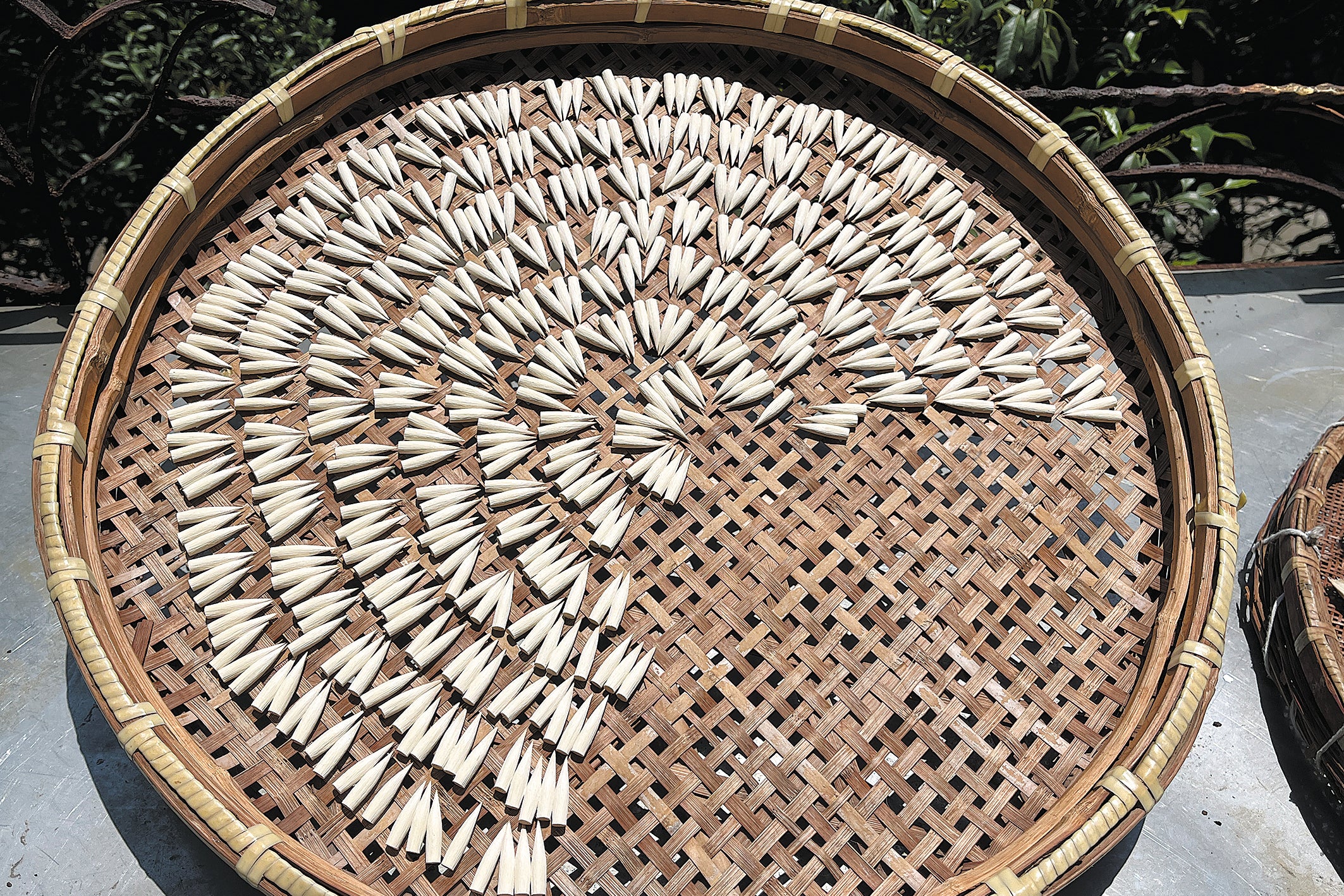A short soft brush connected to a long hard handle, both vigorous and gentle — a simple Chinese writing brush can describe the most sophisticated idea. Achieving both technical excellence and spiritual freedom in writing, a good brush allows for unrestrained creativity and endless variation.
A brush can reveal a dot, a line, the sun, the moon, mountains, rivers, wind and everything people can sense in the world, slender or thick, big or small, concrete or abstract.
Perhaps it is one of the few tools invented by humans that is so practical yet so rich in symbolic meanings over millennia. It not only conveyed common people’s care and emotions, but also recorded history, narrated thoughts, and created the most refined art and literature of this culture, thus greatly influencing the development of Chinese civilisation.
In his book Huzhou Writing Brush and Chinese Culture published by Peking University Press in 2010, the scholar Ma Qingyun quotes Zhou Ruchang (1918-2012), a scholar, poet and calligrapher, as saying: “Without the writing brush, Chinese characters could not have undergone their evolution, not to mention the painting art. Their forms, structures, writing methods, functions and artistic effects would not have arrived at the current situation. Ultimately, the writing brush determines the various forms of documents, such as scrolls, books, records, letters and files.”
Legend has it that one day in 223 BC Meng Tian, a great general of the Qin state, who later oversaw the building of the Great Wall, was out hunting. At some point he saw the tail of an unlucky hare had left a trail of blood on the ground, which inspired him to make the first Chinese writing brush.
Meng first got some hare fur, inserted it into a bamboo stick, and tried to use it to write. However, the fur of the hare was so sleek that the brush failed to absorb ink. After trying several times in vain, he casually threw the brush into a lime pit outside a window.
Several days later Meng came across the abandoned brush and picked it up, finding that the fur had become supple. He dipped it into ink and wrote several characters very smoothly. Unintentionally, the lime wash had degreased the fur. Lime is still applied today.
Archaeological discoveries have long poured cold water on stories of Meng inventing the Chinese writing brush.
Archaeological evidence shows that more than 6,000 years ago people living in the Banpo site, in the east of what is today Xi’an, Shaanxi province, used brushes to draw patterns and lines on the surface of pottery. However, compared with pottery or oracle bones, brushes are difficult to preserve and thus rarely seen in ancient ruins.
In the following millennia before Meng’s time, brush traces are also shown on the oracle bones and pottery from the Shang Dynasty (c. 16th century-11th century BC). In the late 1950s archaeologists unearthed a writing brush in Xinyang, Henan province. This brush, dating to the early Warring States Period (475-221 BC), is the oldest one discovered in China, much earlier than Meng’s supposed invention.
In the next more than 2,000 years, writing brushes evolved alongside the advancements of writing mediums — from oracle bones, bamboo slips and silk to different types of paper. The centre for making top-quality writing brushes also shifted from one place to another. Since the Yuan Dynasty (1271-1368), writing brushes produced in Huzhou, Zhejiang province, have established themselves as the premier writing tool in China.

Huzhou writing brushes are distinguished by their sharpness, neatness, and durability. Structurally, the brush should be well-built, featuring resilient bristles that swiftly regain their original shape after compression.
The complete crafting process of a Huzhou writing brush comprises eight procedures, meticulously subdivided into 128 steps, according to Qiu Changming, a national-level inheritor of the craftsmanship in Shanlian town of Huzhou.
The artistry of the Huzhou writing brushes was designated as a form of national intangible cultural heritage in 2006.

